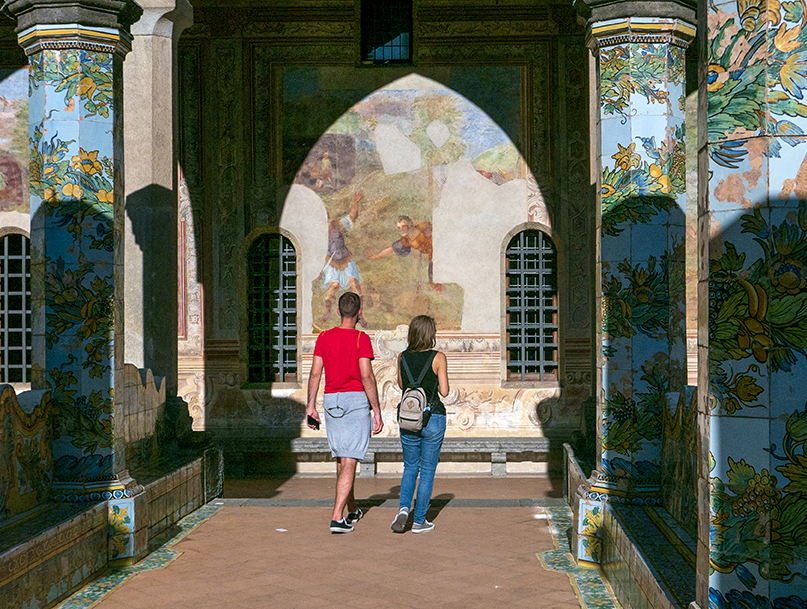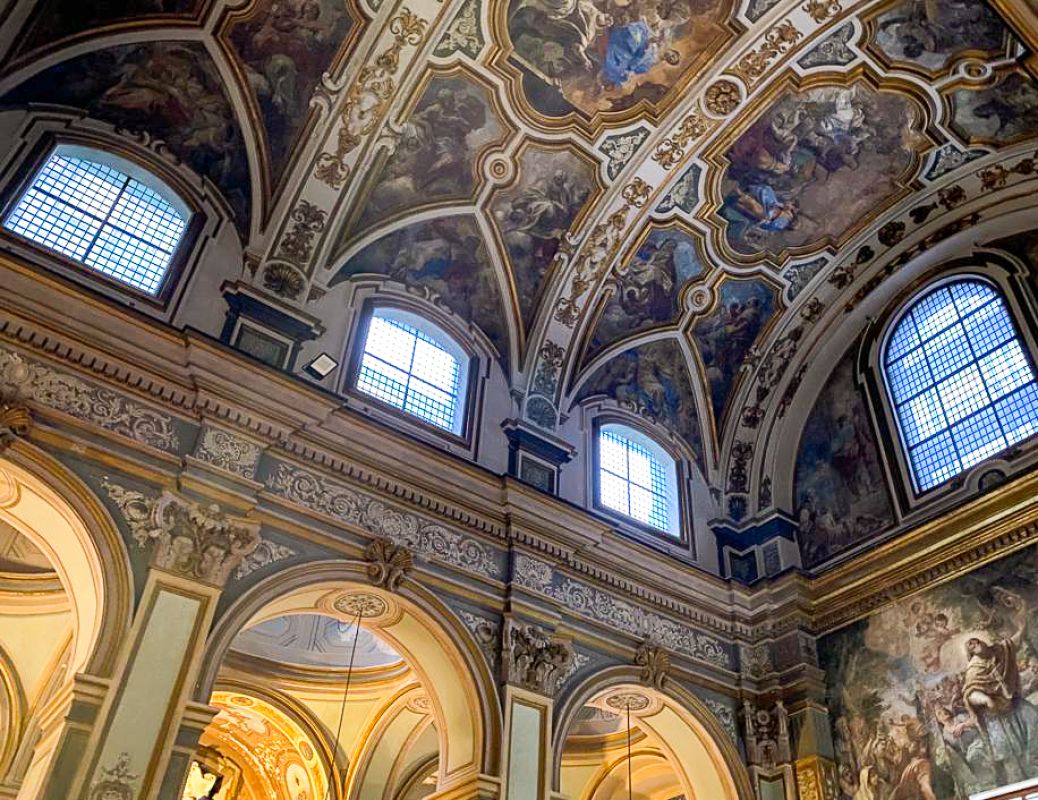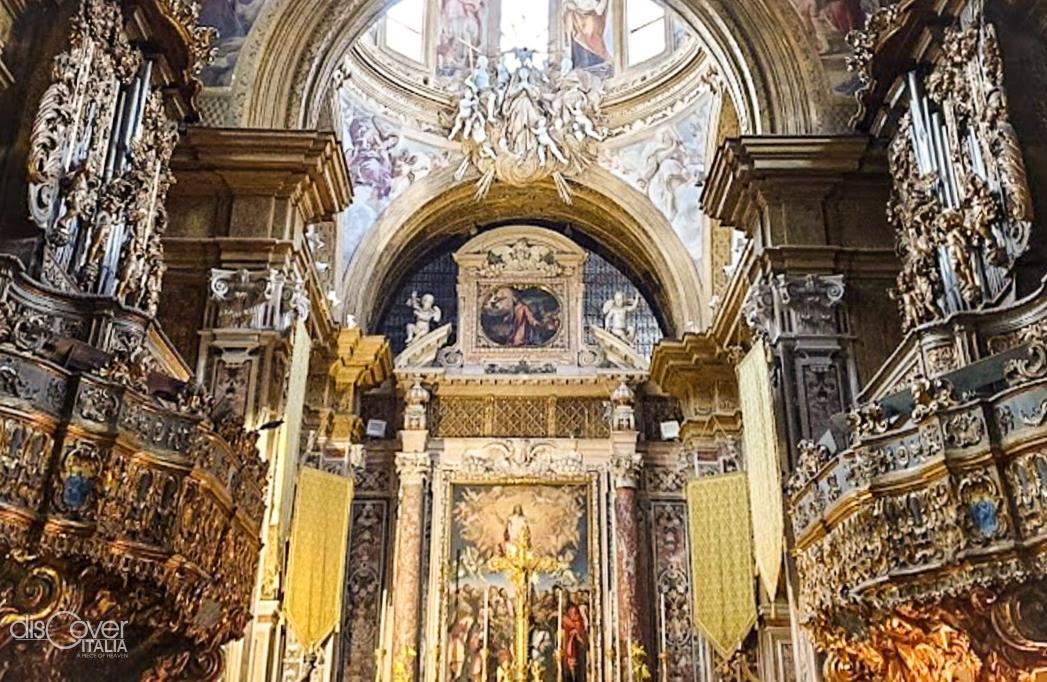
Just fourteen years after his canonization, it was supposed to be the homage of the Neapolitan Jesuits to Saint Francis Xavier, missionary of the Society of Jesus in the East and great friend of the founder Saint Ignatius of Loyola.

One of the most significant places in Naples is undoubtedly the Girolamini complex, located in the historic center between the decumanus major (today's Via dei Tribunali) and Via Duomo.

Walking along the lower decumanus along via San Biagio dei Librai, a few steps from the church of Sant'Angelo a Nilo, we come across the church of saints Filippo and Giacomo.

One of the main buildings of Naples from the Angevin period is undoubtedly the church of Sant'EligioMaggiore, which is located a stone's throw from Piazza Mercato.

Along via Duomo, stands the church of San Giorgio Maggiore, which is in all respects one of the most important testimonies of the different stratifications of eras in Naples.

Situata nel pieno centro del ventre di Neàpolis, foro dell’epoca romana nonché Agorà del periodo greco, la basilica di San Paolo Maggiore è uno degli edifici religiosi più importanti di Napoli.

In the crowded lower decumanus, more commonly known as Spaccanapoli, is the historic Piazzetta Nilo, the nerve centre of Greco-Roman Naples.

A stone's throw from Piazzetta Nilo, in via Giovanni Paladino, is the basilica of Gesù Vecchio. This name serves to distinguish it from the church of Gesù Nuovo, a much larger religious building which was built by the Jesuits in a subsequent moment of particular expansion.

They are the main distinctive element, but the gray piperno stones with a particular diamond shape that cover the facade are older than the church.

Overlapping of levels, eras, styles. To harmoniously compose a monumental complex which, in addition to being a precious treasure trove of works of art, is also a witness and reference to the religiosity of the Neapolitans from the foundation.

Very religious, devoted to St. Francis like his second wife Sancha of Majorca, King Robert of Anjou wanted to create a Franciscan citadel just outside the ancient walls of his capital.


A place of silence and meditation. And of artistic charm too.

The first step is in one of the most beautiful sacred buildings rich in art works and historical testimonies of the city, San Domenico Maggiore, the mother church in the Kingdom of Naples of the powerful Dominican order. Charles II of Anjou strongly wanted it and the construction took place between 1283 and 1324 in Gothic style.